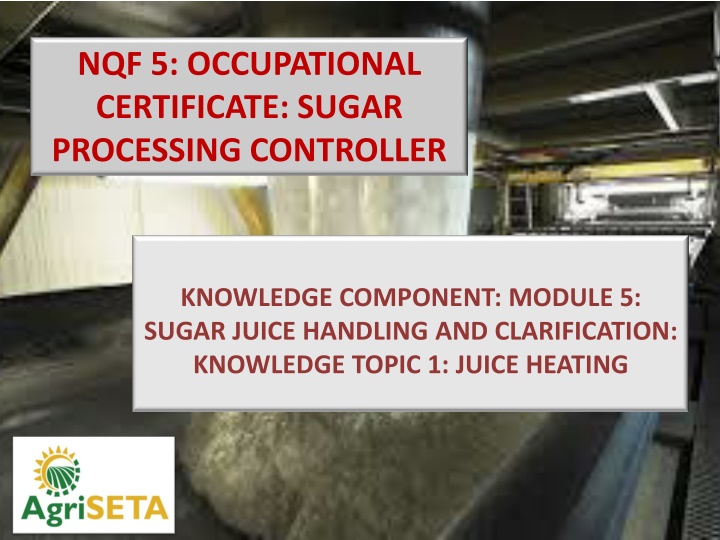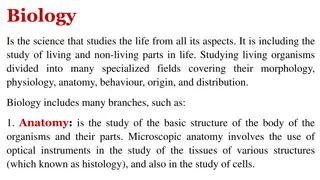Keystone Exam: Biology Module Overview
This information provides details about the Keystone Biology Exam requirements, including the exam components, retake options, and graduation implications. It also outlines the exam modules covering various biological principles, genetics, evolution, and ecology. Additionally, it includes information on after-school assistance sessions and contact details for further queries.
Download Presentation

Please find below an Image/Link to download the presentation.
The content on the website is provided AS IS for your information and personal use only. It may not be sold, licensed, or shared on other websites without obtaining consent from the author.If you encounter any issues during the download, it is possible that the publisher has removed the file from their server.
You are allowed to download the files provided on this website for personal or commercial use, subject to the condition that they are used lawfully. All files are the property of their respective owners.
The content on the website is provided AS IS for your information and personal use only. It may not be sold, licensed, or shared on other websites without obtaining consent from the author.
E N D
Presentation Transcript
NQF 5: OCCUPATIONAL CERTIFICATE: SUGAR PROCESSING CONTROLLER KNOWLEDGE COMPONENT: MODULE 5: SUGAR JUICE HANDLING AND CLARIFICATION: KNOWLEDGE TOPIC 1: JUICE HEATING
Properties of Mixed Juice The major constituents of cane juice from the extraction plant are:
Sucrose A disaccharide One molecule of glucose plus one molecule of fructose
Reducing Sugars Monosaccharides Simple sugars Glucose and Fructose Not removed during clarification Reaction products are highly coloured Can be destroyed by heat under alkaline conditions Degradation of reducing sugars must be prevented Acids produced by reducing sugars must be neutralised by lime Reducing sugars decreases the solubility of sucrose and increase sucrose recovery during pan boiling
Inorganic Salts (ash) Combinations of positive and negative ions Positive ions : K+, Na+,Ca2+,Mg2+,Fe+ Negative ions: Cl-,SO43-,PO43- and SiO44- Not removed in the clarifier Precipitate as sacle in the evaporators Ends up in final molasses Increases solubility of sucrose thus decreases the sucrose recovery during pan boiling
Organic salts Glycollic, suxine, malic, oxalic, tonic, citric, acetic, and aconitic acids. A All form soluble lime salts and are not removed by clarification. Oxalic acid reacts to form calcium oxalate that normally precipitates at higher brixes in the last vessels of the evaporators - forming a hard scale.
Coloured bodies Plant pigments Chlorophyll A and B (green) Carotene (yellow) Xanthophyll (yellow) Removed during clarification Flavanols Polyphenols e.g. Anthocyanins (red, blue and violet) React with iron and oxygen to form dark coloured compounds in alkaline solutions
Iron compounds, Tannins and Pectins Fe2+ and Fe3+ ions Tannins consist of complexes of esters and ethers of various carbohydrates On hydrolysis gallic acid and glucose molecules are formed Pectins Gelatinous carbohydrates Increases viscosity of solutions Increase the solubility of sucrose Slows down crystallization process Hydrolysed in alkaline solutions Precipitated and removed during clarification
Gums and Proteins Gums Colloidal polysaccharides Pentosan units Increase the viscosity of solutinos Cane which is left standing in the field after cutting or diseased cane contains higher gum content than fresh cane Protein Large molecules Made up of amino acids in chains to form peptides Originate from tops and trash Coagulated by heat and lime removed by clarification
Wax Found in the nodes and the rind of the cane plant 60 80% is retained in the bagasse Wax removal is dependant on the temperature of the imbibition water Physically removed with the mud during clarification and can be recovered from the filter cake Some wax may remain in suspension and occlude into the sugar crystals
Starch (Amylose) Starch is composed of glucose units strung together An undesirable impurity in cane juice Causes difficulties in refinery filtration Insoluble in cane juice becomes soluble above 70 C Above 70 C the starch granules burst releasing colloidal starch into the juice Small amount is removed during clarification The remainder is occluded in the sugar crystal and slows down the crystallization rate Removed using enzymes (amylase) which hydrolyses the starch to glucose and maltose Amylase is added between the 2nd and 3rd effect evaporators.
Air Interferes in any clarification process involving settling Removed by heating and flashing prior to clarification Solubility decreases with an increase in temperature
The Need to Remove Colloidal Substances If not removed, results in: Increase in viscosity of syrup and molasses Slows down filtration Causes foaming Increases the colour Interferes with crystallization of sucrose A particular problem group are the pectins, gums and proteins After a severe frost the concentrations of pectins, gums and proteins increase If cane is allowed to stand and go stale: Organic acids increase Gums increase Reducing sugars increase
The Problem of Reducing Sugars Inversion involves the decomposition of sucrose into glucose and fructose Glucose and fructose are called invert sugars or reducing sugars Glucose and fructose cannot be converted back into sucrose Glucose and fructose are lost in the molasses The rate of inversion increases with: Increase in acidity (pH>7) Increase in temperature Increase in the time of the exposure to the above mentioned conditions It is impossible to control all three things (above) at all times The entire factory is designed to control at least 2 of these factors at all times
Effect of Clarification on Juice Colour Colour normally increases in the clarification process Dark colour of raw juice is cause by polyphenol derivatives notably tannin in the presence of iron If iron is absent the colour will be darker The precipitate of calcium phosphate formed in liming absorbs some colour The amount of colour absorbed increases with the phosphate content of the juice The defecation process is used to rid the juice of suspended and colloidal matter but does not reduce colour
The Purpose of Heating Heat is a form of energy measured in joules Heat moves from one place to another in three ways: Conduction Convection Radiation Heating and boiling in the factory is done using conduction Measurement of Heat Transfer Using the heat transfer co-efficient Heating surface Temperature difference Using the specific heat capacity Mass of juice Temperature change Specific heat capacity of the juice
Types of Heat Flow In a heat exchanger there can be three types of flow: Co-current flow Countercurrent flow Cross flow
Heat Calculations Juice velocity and heat transfer K=1.165 Tv (5+ v) Pressure drop through a heater P = 0.0245 x (v2C / D) x (1 + L) Heating surface
Juice Heaters Shell and Tube Heaters A cylindrical steel shell with brass or stainless tubes expanded into tube plates at the ends Vapour is fed around the tubes Juice is pumped through the tubes Plate and Frame Heaters Consists of a bank of corrugated stainless steel places that hang in a frame The space between the plates is alternatively filled with juice and steam Flashing and Flash Tanks Open to the atmosphere Juice under pressure at 105 C enters the flash tank and boils violently (i.e. flashes) Definition: Flashing is violent boiling caused by a pressure drop Rids the limed juice of entrained gases
Purpose of Juice Heaters Scalding juice heaters Associated with diffusers To control microbiological losses and to facilitate sucrose extraction Mixed juice heaters After the juice scales but before the clarifier Facilitates clarification by: Promoting coagulation of proteins Increases the rate of precipitation Removes air by flashing Controls microbiological losses Clear juice heaters Other heaters used to heat: Intermediate juice Press water Imbibition water























